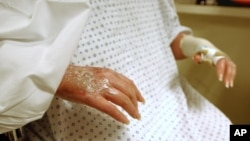Excuse me. Being fair-skinned and freckled, I am a perfect case of someone subject to skin cancer. Growing up in Southern California trying to be dark-skinned by all the Mexicans living around me, what a surprise that I've had basal and squamish skin cancers too numerous to count.
Now, BBC reports on this great new discovering dealing with gene mutations? Why does this not thrill me? And, all it will prove is that people will smaller amounts of Melatonin should cover up and keep out of the sun. Anyhow, read the article @ BBC News - Skin cancer: Genetic mutations 'warn of risk'
p.s., I was in my early thirties when a highly respected dermatologist told me I would have lots of skin cancers in my '50s. He was right. Best of all, he told me what to look for to reduce the chances of having deadly melanoma.
Now, BBC reports on this great new discovering dealing with gene mutations? Why does this not thrill me? And, all it will prove is that people will smaller amounts of Melatonin should cover up and keep out of the sun. Anyhow, read the article @ BBC News - Skin cancer: Genetic mutations 'warn of risk'
p.s., I was in my early thirties when a highly respected dermatologist told me I would have lots of skin cancers in my '50s. He was right. Best of all, he told me what to look for to reduce the chances of having deadly melanoma.





